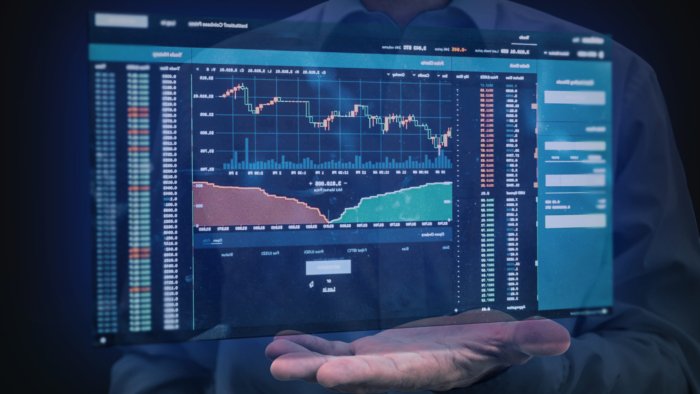Are you fed up with being a novice in Forex trading? Want to elevate your skills from mediocre to exceptional? Look no further! In this blog post, we will reveal the secrets to mastering Forex trading, regardless of whether you are a seasoned trader or just starting. We have compiled essential tips and strategies that will take your game to the next level and pave the way to financial success. Get ready for an exciting journey as we explore the world of forex and unlock its endless potential.
Prepare to master the subject quickly!
Introduction to Forex Trading
Forex is the world’s largest and most liquid financial market, where currencies are traded globally by individuals, businesses, and institutions. This decentralized marketplace enables the buying, selling, and exchanging of currencies at current or agreed-upon prices, playing a vital role in international trade and investments.
Forex trading happens nonstop 24 hours a day, five days a week, which lets traders engage in exchange activities from any part of the world. The large sum of over $5 trillion exchanged daily makes it an appealing option for investors wanting to generate profits by predicting the changes in currency value. In essence, forex trading entails speculating on the worth of a single currency when compared to another, to produce a profit.
An illustration of this can be that, if you foresee that the Euro will rise in value against the US Dollar, you can buy Euros with your Dollars and then sell them for a higher price when their worth increases.
Understanding the Basics Of Forex
Currency trading, often referred to as Forex, involves the exchange of currencies taking place in the global market. It is the largest financial market globally and has an average daily volume of over $5 trillion. In Forex trading, traders predict the price fluctuations between various currencies to generate profits.
Understanding forex trading requires knowledge of fundamental concepts and terms. Begin by learning about currency pairs, which comprise two currencies – one is purchased while the other is sold. For example, purchasing EUR/USD means purchasing euros while selling US dollars. The cost of a currency pair is established through the forces of supply and demand in the market.
Various elements such as economic information, political events, and central bank plans can all have an impact on the supply and demand for a specific currency. Consequently, the costs of commodities can change frequently throughout the day.
Leverage is another fundamental idea in forex trading. It lets traders manage bigger positions using just a small sum of capital. For instance, with a leverage ratio of 1:100, you may manage a position valued at $100 by investing just $1 of your own money.
Fundamental analysis in forex trading involves examining economic data and news releases to forecast their effects on currency prices, while technical analysis entails scrutinizing price charts and other technical indicators.
On the one hand, technical analysis is the process of examining charts and indicators to identify trends and patterns in price movements. However, forex trading has a unique feature in that it operates continuously from Monday to Friday due to its global nature.
- Even though there are specific high liquidity periods during the overlapping sessions of major financial centers like London, Tokyo, and New York, trades can still be executed at any time during weekdays. Currency trading is extremely flexible as it permits traders to seize opportunities around the clock.
Market Analysis and Strategies for Successful Trading
- Forex trading success depends on market analysis, which involves assessing and analyzing current market trends, indicators, and political events that may impact currency prices.
Traders can make better decisions and develop successful strategies by studying the market. Technical analysis is a crucial tool for market analysis, as it involves interpreting charts and graphs to uncover trends and patterns in price movements through time. Traders employ several technical indicators, including moving averages, support and resistance levels, Fibonacci retracements, and momentum oscillators, to assist with their trading decisions.
Analyzing essential market elements is crucial in understanding trends. This includes examining macroeconomic data like GDP growth, inflation rates, employment figures, central bank policies, and geopolitical occasions that can affect currency value. By staying knowledgeable about these crucial fundamentals, traders can anticipate and prepare for potential shifts in the market.
In addition, sentiment analysis is crucial for understanding the perception of other traders in the market at any given time. Traders generally depend on news sources, social media platforms, or sentiment indicators to assess the market sentiment. By tracking public opinion towards specific currencies or events, traders can gain knowledge about potential price movements.
After gaining a comprehensive understanding of the market through extensive analysis, traders can devise appropriate trading strategies that align with their risk tolerance level and objectives.
- Some widely used techniques in forex trading include scalping, day trading, swing trading, trend following, and range-bound trading.
Tips for Choosing the Right Broker
Beginners in forex trading may find it overwhelming, but having the right broker can make a significant difference. A broker is a financial institution or individual who serves as a middleman between buyers and sellers in financial markets. They execute trades on behalf of their clients and offer valuable insights and analysis to guide their investment choices. Selecting the appropriate broker is essential for success in forex trading due to the numerous options available.
To make a well-informed decision, consider the following key tips in choosing the right broker for your trading journey.
1. Regulation and Security:
When selecting a broker, it is essential to take its regulation and security into account. A reliable broker should be overseen by a trustworthy regulatory body such as the Financial Conduct Authority (FCA) in the UK or the US Securities and Exchange Commission (SEC). This ensures that your funds are protected from any fraudulent activities.
2. Trading Platform:
The key aspect is the trading platform provided by the broker, ensuring it is user-friendly while offering advanced charting features such as technical indicators to provide real-time market data for seamless execution of trades without any malfunctions.
3. Commission and Spreads:
The income of brokers comes from commissions or spreads they earn on each transaction made through their platforms. Comparing these fees among various brokers is crucial as it can have a significant impact on your trading expenses.
4. Demo Account:
Demo accounts are typically provided by brokers to enable traders to test out their trading methods without incurring any real monetary losses. It is crucial to evaluate multiple brokerages’ demoMost offers to get a sense of their platforms and services before settling on one.
Essential Tools and Resources for Forex Traders
Trading in the forex market may appear to be difficult and demanding, but by making use of the appropriate tools and resources, you can boost your trading abilities and increase your chances of success. In this part, we will discuss crucial tools and resources that every forex trader should have in their toolbox.
1. Trading platform:
A trading platform is essential for any forex trader as it is where they can execute trades, monitor market movements, and analyze price charts. Popular options that offer advanced charting capabilities, customizable indicators, and automated trading systems include MetaTrader 4 (MT4) and MetaTrader 5 (MT5).
2. Economic calendar:
To be an effective forex trader, it is essential to stay informed about financial happenings and their potential influence on currency pairs. An economic calendar offers details on upcoming news releases including
- central bank meetings, GDP reports, inflation data, and more, enabling traders to develop their strategies accordingly.
3. Price charts:
Charts, such as candlesticks or lines, can help traders see patterns and forecast future market movements. Various trading platforms have charting tools, but there are also standalone options like TradingView with more advanced analysis capabilities.
4. Technical analysis tools:
Apart from price charts, technical indicators such as
- moving averages, RSI, and MACD
can be beneficial in identifying trends and generating trading opportunities. These tools are usually available on most trading platforms and can be tailored according to an individual’s preferences.
Conclusion
The dynamic world of forex trading demands expertise and proficiency to prosper. By adhering to these vital techniques and tactics, one can achieve mastery in forex trading and attain their financial objectives. Remember that success stems from diligence, perseverance, and ongoing education. By exerting effort and consistency, one can master forex trading and reap its possible benefits. Begin incorporating these strategies right now, keep concentrated on your objectives, and see yourself expand your Activity in forex trading.



Excellent and informative post